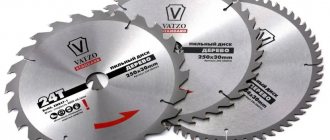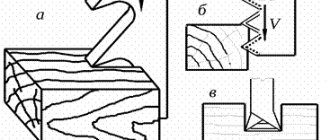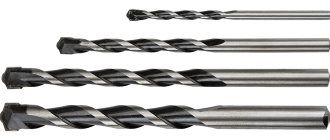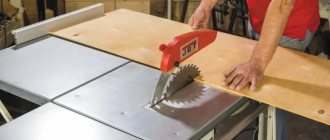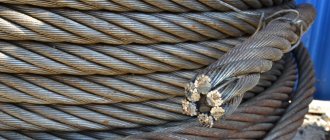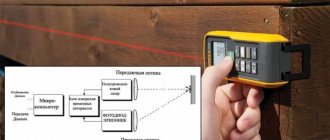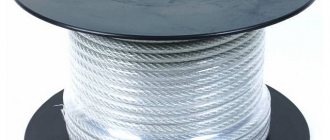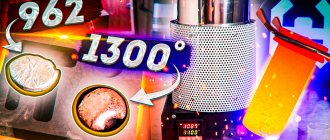Tooth material and shape
Saw blades are steel blades whose tips are high-temperature welded cutters.
As a rule, these parts of the tool are made of sintered tungsten-cobalt alloy (grades VK, VK6, VK15, etc.). Hard alloys are also used. But it should be taken into account that the strength depends on the grain size of the carbide phase.
The soldering itself (tooth) has the following planes:
- Front;
- Rear;
- Two side (auxiliary).
That is, intersecting, they form two cutting edges:
Measuring the degree of sharpening of a circular saw
In most cases, circular saws with pobedit tips are rarely used, but for significant volumes of material and for a long time. Therefore, it is quite normal that the incisors begin to wear down over time. This product must be sharpened as needed. Determining the degree of sharpening is quite simple:
- When sawing the material, irregularities, nicks, and chips begin to appear, and when cutting wooden objects, a characteristic smell and black marks on the material begin to appear;
- Working on the machine becomes more difficult, since more effort must be applied, resulting in a heavy load on the engine.
Important! Failure to monitor the sharpness of the disc cutters can lead to the fact that the product can no longer be sharpened or repaired. Therefore, it is worth carefully monitoring the condition of the instrument.
It should be noted that, as a rule, these machines are equipped with protective relays. But if there are none, the device may fail faster if sharpening is done incorrectly or at the wrong time.
General information
Just as there is no panacea for all diseases, there is no one universal saw element for all types of woodworking. For fast, high-quality, and most importantly, safe operation, each operation requires an appropriate disk.
Before choosing a disk, you need to decide on the working material:
- type of wood - hard or soft;
- cutting will be done lengthwise or crosswise;
- type of workpiece being processed - boards, plywood, chipboard, the presence of any coating.
Disks for different tasks
While cross-cutting is best done with a disk with a negative tooth angle, for longitudinal cutting this option is unacceptable due to the occurrence of a repulsion effect, so the model for longitudinal sawing is not suitable for cross-cutting. Negative consequences can occur for the saw engine - sawdust, clogging into the interdental sinuses, creates enormous overloads on the engine.
For each type of work, appropriate disks are selected, which may differ:
- a series or a hint for you in a painful choice;
- the type and angle of the teeth - with a positive inclination, the cut is made faster, but sloppily, with a negative inclination, on the contrary - slowly, but cleanly;
- number of teeth - a large number of them (80−90) are suitable for a clean cut, but the work is slowed down by accumulating chips; the fewer teeth (10–40), the faster the work goes, the chips are removed, but the cut looks torn;
In the photo - a disc for a clean cut
- design - on a high-quality disc, grinding marks diverge from the center, i.e. each was processed separately; the surface should not have roughness, otherwise it will heat up and the teeth will quickly become dull; stiffening rings, wavy expansions and a special coating of the canvas also indicate its good quality;
- outer diameter;
- diameter of the mounting hole;
- maximum speed;
- blade thickness - a thin disk creates minimal load on the engine and can be used in a cordless saw, but it is not suitable for heavy work;
- marking - on high-quality samples it is laser and contains information that is discussed here point by point.
Of course, you should know the technical capabilities of your instrument, which include:
- engine power that will “pull” discs at high speeds; a large number of teeth and their negative angle;
- spindle rotation speed – proportion of blade size = drive power is better not to disturb and not see the consequences;
Rotation speed depending on diameter
- the size of the seating pin, which guarantees a secure fit of the disk; otherwise, an adapter ring is purchased, but it is still advisable to choose the right size. For example, a 200x32 wood saw blade should be mounted on a pin with a diameter of 32 mm;
- permissible outer diameter, the protective casing serves as an additional limiter.
Materials used and the process of sharpening a pobedite circular saw tooth
When working with a circular saw, most often the main edge becomes dull. During the cutting process, the main emphasis is on it, so it is necessary to ensure that it is not rounded by more than 0.3 mm, as difficulties may arise during subsequent sharpening of the cutters, not to mention a decrease in productivity.
Auxiliary planes are also subject to wear (though to a lesser extent), especially when working with massive products.
To sharpen the teeth of circular saws with pobedit teeth, high-strength materials are used - diamond wheels, wheels made of silicon carbide (green), etc.
Important! Before starting the process, you need to make sure that the device is clean, that is, make sure that there is no dirt or water on the surfaces being processed. It would also be a good idea to treat the diamond wheel with a cutting fluid, since there is a high probability of rust occurring when cooled with plain water.
When choosing an abrasive wheel, you should pay attention to the fact that its surface is slightly grainy, because this is how the desired cleanliness of the surface of the tooth being sharpened is achieved. Otherwise, when working, chips, nicks and other defects will remain on the material.
To process pobedit tips, the rotation speed of the sharpening wheel must be at least 15 m/s, that is, with a diameter of 120 to 125 mm, the rotation speed must be at least 1500 rpm.
There are special devices for sharpening solder tips - sharpening machines, the advantage of which is:
- Variability of movement of both the machine and the abrasive wheel;
- Ensuring an even sharpening angle.
Further actions are carried out manually - turning the saw in a circle (per tooth), subsequent grinding, checking the volume of metal removed. Such mechanisms are excellent for processing soldering at home.
Cutting blades for hard materials
The cutting surface of the discs is made of glass fiber reinforced silicon carbide abrasive. Two types of blades are available. For soft materials:
- concrete block,
- brick,
- limestone.
The other is for hard materials:
- specific,
- marble,
- glazed ceramic tiles.
- granite
Blades for cutting plastic pipes
Blades with 60 teeth for cutting plastics, soft non-ferrous metals. Wooden blades with 40 teeth cut plastic pipes. The lower the speed of immersion in plastic, the better. If you quickly insert the blade into the tube, it may get stuck in the tube and bounce off. Inserting the disc slowly into the tube can help avoid these problems.
We hope this article on saw blades serves as a guide in choosing the right circular tool to cut the right material. The saw blades have selection information and markings. There are pictograms that show the position of cutting the material: longitudinal or transverse cut. Installation dimensions can be changed using attachments.
Security measures
The only serious drawback of this product is that it is dangerous. A retractable guard over the base of the saw prevents material from entering the top and sides of the tool. Be careful when using a circular saw and wear eye, ear and respiratory protection.
Wood cutting
By typing “Novosibirsk circular saw” into a search engine, you will see that circular saws have automatic brakes that stop the blade when the trigger is released. There are models with the function of collecting dust and sawdust. Stores often sell two types of blades: high-speed steel and carbide blades. The second is more expensive, but resists wear better.
Plywood blades are made from high-speed steel and have up to 160 teeth per blade. The engraving on both sides is clean and less dust is generated. Plywood saw blades are used to cut laminate flooring.
Types of sharpening
The process itself is divided into three types:
1. Sharpening the front surface of a straight tooth
The tooth and abrasive wheel are installed perpendicular to each other, taking into account that the saw itself must have a horizontal position. If the machine does not have an angular tilt scale, you can use a pendulum inclinometer. Next, you need to securely fix the tools.
The process itself is the contact of the abrasive wheel and the ground surface back and forth through a mechanism in the machine, while simultaneously pressing the tooth against the wheel manually. This process is repeated with each saw tooth.
For convenience, you can make a mark on the tooth from which sharpening began.
2. Sharpening a tooth beveled along the front surface
This type of sharpening involves performing the same actions as before, with the difference that the angle of inclination must be changed in accordance with the location of the teeth. You can measure the inclination with a pendulum inclinometer. First, positive angles are sharpened through the tooth.
Next comes the process itself:
- Every second soldering point is sharpened;
- Then the angle changes to negative;
- The remaining teeth are processed.
- Back sharpening
This process provides the ability to change the position of the disk so that the back plane of the braze is in contact with the abrasive wheel.
If you don’t have a sharpening machine, you can make everything yourself. How to sharpen a disc with your own hands:
- Make a support for the saw that will fix the saw. This device must firmly hold the saw, otherwise the process will pose a danger to the performer;
- Adapt a stand on which the disk itself will be located (if necessary, the angle of inclination can be changed with the supports);
Important! The abrasive saw and saw blade must be perpendicular to each other.
- Attach the circular saw in its center so that it is in contact with the wheel in the desired position (to maintain the same back and front sharpening angles).
Summarizing
Circular saws are an indispensable tool when it is necessary to cut large volumes of lumber. Choosing the right saw blade is no less important than skill in using the tool. The proposed material will allow you to understand the classification and main design features of saw blades for wood. (See also the article Wood sander: features.)
The video in this article is a short overview of the Freud carbide blade.
You may not have thought about it, but the correct choice of a hacksaw determines not only its service life, but also the ease of use and quality of the cut. Let's consider the main parameters of the correct choice of this tool, which is necessary for household and carpentry activities.
How to know when it's time to sharpen a disc
Cutting discs used for processing wood and wood-based materials experience wear and tear over time, reducing their productivity. To restore the effectiveness of the cutting tool, you will need to sharpen the teeth. You can find out that the teeth on the disk need to be sharpened by the following factors:
- To cut wood, it is necessary to apply force to press the tool against the workpiece being cut.
- There is smoke coming from under the protective casing.
- The protective casing becomes overheated
- There are signs of a burning smell. This means that the teeth do not saw the wood, but cut it
Using a faulty attachment on a power tool leads to a decrease in work productivity, and also increases the likelihood of early failure of the power tool and the attachment itself. A decrease in performance increases the load on the electric motor, which eventually begins to overheat and fails.
What teeth are there on cutting attachments?
At the heart of any cutting device are teeth, the quality of their sharpening affects efficiency and productivity. The teeth on the attachments are made directly from carbide materials. To increase the service life, pobedit soldering is applied to the teeth, which allows you to extend the life of the working attachment by 5-6 times.
The number of cutting teeth on a wheel depends on its diameter. The teeth consist of a front and a back part, which differ in design, as well as a side part. Teeth according to their appearance (geometry) are classified into the following types:
- Straight - a type of teeth used for longitudinal cutting of sheet material
- Trapezoidal shape - the cutting links have a trapezoidal shape, which is an advantage - they need sharpening very rarely
- Bevel links are the most common type of teeth and are characterized by the presence of an angular bevel on the back or front. This design allows sawing not only wood, but also other types of materials such as fiberboard, chipboard, plywood and even plastic.
- Conical - they have the shape of a cone, but their main drawback is that they quickly become dull, so they need frequent sharpening. They are used not only for transverse, but also longitudinal cutting of sheet material
Manufacturers also produce circular saw blades with active and passive links. Depending on the type of teeth, the process of sharpening them differs. To properly sharpen the teeth on a circular saw, you will need to correctly determine the sharpening angle.
Main characteristics of equipment
When choosing the right drive for your machine, there are a number of important factors to consider that affect performance. The main technological indicators are:
- Electric motor power. To fit a large diameter saw blade, you need to turn the motor as high as possible. The disadvantage of such devices is their weight. For example, a device with a 1200 W electric motor weighs about 4 kg. The most powerful system with a power of 2000 W already weighs 7 kg.
- Depth. To get a long cut of a certain depth, it is very important to choose the right power.
Disk rotation speed. This parameter is directly proportional to the density of the workpiece. The cut will be clean if the rotation speed is very high.
disc on a miter saw
Adjusting the angle of inclination. Many saw models have this setting. If you often cut at an angle, then you need to take a disk with a thickness of more than 2.5 mm.
Thinner discs will bend when cutting at an angle and it will not be possible to make an accurate cut.
Selecting the sharpening angle of the cutting teeth
The links on the cutting attachments have a working area, which has a corresponding sharpening angle. Depending on the type of teeth, the disc can be used in one or two cutting directions. When the links become dull on one part, the disk must be turned around and work continued in the opposite direction. However, this cannot be done with all circular discs; for example, circles with beveled links are not suitable for this.
If you sharpen a circular saw blade with your own hands, then you need to understand that depending on the direction of the cut, you need to take into account the sharpening angle.
- If you plan to saw wood in the longitudinal direction of the grain, then the sharpening angle on the links should be 15-25 degrees
- If the wood is sawn transversely, the sharpening angle is reduced to 5-10 degrees
- The universal sharpening angle is considered to be 15 degrees. With circles with such links you can saw not only across, but also along
When sharpening teeth on saw wheels and disks for circular saws, grinders and circular saws, one more important factor must be taken into account - the density of the material being cut. The lower the density, the higher the sharpness of the tooth should be. If a circular saw is used for sawing plastic or plastic, then the sharpening angle of the blade should be negative.
Selection by purpose
In addition to taking into account the main types of saws, the choice of a hacksaw for wood should be made upon request for a specific type of work:
- Swing for longitudinal sawing;
- Transverse copes well with wood across the grain;
- Tenoning for cutting grooves, tenons and technological recesses in products;
- Circular for cutting holes of different shapes;
- Folding hacksaw for wood
These types of wood hacksaws generalize the above tool models. The choice should be made according to the main purpose for which the selected type of tool is purchased. For the household, it is advisable to purchase a saw with replaceable blades or have several hacksaws of different types in your arsenal .
How to decide
This amount of new information is not easy to put into practice, so we will give you some tips on how to consistently choose the right saw.
- The first factor to consider is what sawn material will be used and what is the desired quality of the cut. Carpenters who work with small wood products choose small saws with a short blade. For a carpenter, it is better to use large teeth and a blade - this master does not require high precision work, speed is a priority. A folding garden hacksaw is ideal for summer residents who will only cut through trees and shrubs.
- Frequency of application. Determine how often you will need to use the tool. If the need arises rarely, take a saw with hardened teeth; if the need for sharpening often arises, use ordinary steel.
- The quality of the steel must be high for a tool with any frequency of use. The higher the class of metal, the better the quality of the product. Before purchasing, take the tool in your hands and carefully bend the blade to 45 0. Good metal is elastic and, when the end of the saw is released, it will restore its shape without displacing the central axis. If you notice a deviation, return the hacksaw to the seller.
- In this case, price is a guarantee of quality. Of course, provided that the seller is honest and does not offer you a fake. A good product cannot be cheap. Choose in the middle price range, if your wallet allows it - don’t skimp on an expensive saw. Select a manufacturer based on its trust rating and give preference to its products in the store. In most cases, this tactic allows you to avoid buying something unknown instead of a good tool.
- Take the hacksaw tool in your hand. You should feel comfortable holding it. The material used can be solid plastic with a rubberized handle.
By following these simple rules, you can easily choose a wood hacksaw that suits your needs.
“>
How to sharpen a blade on a circular saw with pobedit tips
Craftsmen often buy wheels that have increased wear resistance due to the presence of special pobedite soldering. These soldering extends the service life of the consumable, but does not make it last forever. The pobedite layer is applied to the links using a special solder. Due to soldering, the geometric shape of the tooth becomes more complicated, and therefore the sharpening process also becomes more difficult. Restoring the sharpness of the teeth must be carried out taking into account precise exposure.
To sharpen the teeth on a carbide-tipped blade, you will need to smooth the cutting edge to 0.3 mm. To perform high-quality sharpening of carbide-tipped teeth, experts recommend using special equipment for this, as well as diamond-coated grinding wheels. If you use an abrasive wheel, it will quickly wear off before the soldered disc can be sharpened.
When restoring the sharpness of links, the following factors are taken into account:
- Saw blades must be sharpened not only on the front, but also on the rear plane. You need to start directly from the front
- When sharpening, the pobedit tip should be in close contact with the diamond sharpening wheel.
- The contact time should be no more than 5 seconds. It is necessary to take into account the time in order to avoid overheating of the metal. If the metal overheats, it will harden and decrease in hardness.
When sharpening, you must also take into account that the thickness of the material being ground should not be more than 0.15 mm. If the procedure is carried out correctly, then at least 30 sharpenings are carried out until the disk with pobedit tips is completely worn out.
The main parameters you should pay attention to when choosing
These are the characteristics; if they are not met, the disc simply does not fit the specific instrument.
External diameter
On stationary circulars, especially on crafts, you can use discs with a large difference in diameter. Small for cutting thin pieces, great for large sized lumber. In this case, it is advisable to have a different set of disks.
Landing diameter
In Soviet times, only two mounting diameters were provided for stationary and cutting circulars: 32 mm and 56 mm. Today, manufacturers all over the world produce saddle shafts and discs in different sizes: 18 mm, 20 mm, 30 mm, etc.
However, the standards remain, even if there are more of them. And this is understandable: backlash is not allowed here. The disk must fit tightly on the shaft, otherwise they simply will not be able to work. Too small a circle diameter will not allow the disc to be installed on the shaft; too large will cause movements, shocks and vibrations incompatible with operation.
Adapter rings or washers are sometimes used to ensure compatibility between different diameters. For example, using a washer with an internal diameter of 32 mm and an external diameter of 56 mm, a disk with an internal diameter of 56 mm can be mounted on a support shaft with a diameter of 32 mm.
A 1mm adapter ring allows a 32mm disc to fit a 30mm shaft, etc.
Thickness
The parameter matters. Thin disks have many advantages and disadvantages compared to thicker ones. Advantages:
- saw faster
- with less noise
- make a thin cut with a minimum of sawdust waste.
The latter is especially important when sawing expensive wood. Sometimes only 2-3 mm determines how many rods, for example, will come out of the panel: 5-6 when cutting with a thin disc or 4-5 when cutting with a thick saw.
The thin blade makes a cut 2-3 mm wide. Thickness – 3-4 mm. Sometimes a large blade with a wide tooth can cut 5-6mm wide.
Disadvantages of thin disks:
- tend to bend, so sometimes the cut can be wavy,
- it can quickly overheat, sometimes to the point of "washout", which can completely destroy the drive. Overheated disks begin to “shake” with varying amplitudes, sometimes up to 10 mm or more.
Thicker and heavier rims are slower but more stable.
Variety
Two fundamentally different types of disks are used:
Made entirely from cutting steel, they are called built-in or monolithic.
monolithic and carbide disc
With cutting teeth welded to various carbide alloys.
The first ones are of the outgoing type. They were widely used at a time when there was no technology for precise and durable soldering of carbide. However, monolithic disks still have a number of advantages:
- very long service life, it is limited only by the fact that over time, after many sharpenings, the diameter of the disk decreases to critical sizes,
- ease of sharpening and straightening teeth,
- no welding, tooth strength in one piece.
- the ability to change the shape and sharpening angles of the tooth,
Disadvantages: They require regular dressing, sharpening and re-sharpening of the teeth, as they are less durable than carbide teeth.
They were not cheap, since not only the teeth, but the entire series were made of special tool steel.
Other cheaper steels are suitable for carrying and holding cutting teeth made of hard alloys without swinging and without overheating. Today they are used on discs with soldered teeth.
The quality of such a disc largely depends on the composition of the hard alloys. Most manufacturers keep their recipes secret. However, it is well known that the most durable were the old Soviet wheels with “Pobedit” teeth.
Today, tungsten carbide, cobalt and other elements are used in alloys. Simple and household discs are not particularly durable - they crumble, the weld seam bounces off, and quickly cleans to zero after several sharpenings due to their small size. But expensive professional blades from well-known brands can last a long time and require less frequent sharpening.
Number of teeth
The cleanliness of the cut mainly depends on the number of teeth. It is important that not only the number of teeth differs, for example, per 10 cm of circumference, but most importantly, their size. If there are many teeth, they are small in size. Small teeth cut slower and cleaner, removing less material.
The differences in the functioning of a disc with a small number of large teeth and a large number of small teeth are very significant.
- When working with a large toothed disc, there is less friction and it is easier for the engine.
- The disk heats up less.
- Large sawdust is formed.
- The blade cuts faster.
- At the exit, a large tooth can pull out pieces of material, especially plywood, chipboard, etc.
- Round stripes and tooth marks may remain on the cut.
A disc with fine teeth and a large number of them produces fine sawdust.
- The friction heats up and the wood can burn.
- A reserve of engine power is required, since friction can lead to braking of the disk.
- A small tooth at high speed pulls out less material at the exit.
- High cutting speed is achieved without streaks, as clean as with honing.
For quick and easy cutting, discs with rare and large teeth are more suitable. For better cutting, a tooth with more fine teeth is better for cutting diagonally and through the grain.
Tooth geometry
All modern discs use two types of teeth:
- "Eagle Beak"
- Straight pointed teeth.
The form of the first option is well checked, verified and calculated. The front sharp tip of the tooth throws out sawdust. The cavity under the carbide tooth does not create friction, facilitates the movement of the disc, and reduces heating. Such discs are successfully used for longitudinal, diagonal and cross cutting.
saw blade teeth sharpening angle
Pointed teeth, similar to the teeth of a “two-handed” or hand saw, cut wood better. That's why today they can be found on miter saws, especially older models. They are very effective for this. This tooth shape is unsuitable for longitudinal cutting: there is strong friction, noise is created, the disc overheats, and the wood burns.
Sharpening angle
This figure varies for different devices and manufacturers. The main difference is the positive and negative rake angles.
Minus: the cutting edge of the tooth is tilted back from the radius axis by 5-10 degrees. Used on special discs for plastic, metal, MDF, laminate, engraving discs, etc.
Positive: the tooth is inclined forward, from the radius axis by 10-20 degrees. The most popular version of standard discs for wood and other soft materials.
Other differences, top view of the tooth:
- The tooth is straight, even, perpendicular to the cut. Enter the piece with the whole plan at once.
- A tooth with a triangular beveled edge. Introduce the material with the sharpest protruding edge first.
The first option for flawless operation requires constantly sharp sharpening and sufficient engine power.
The second option is by definition sharper, since it enters the material first with a sharp edge. But such teeth are prone to chipping due to the heavy load on the thin tip.
Teeth sharpened to simulate a divorce. Through one (left-right) such teeth are sharpened at a slight angle to the disk.
The most unpretentious discs are those with a simple straight edge. They absorb the impact load when they enter the material with the entire floor, so they crumble less. The important thing is that they are easier to sharpen even by hand on a diamond blade.
Only one positive forward lean angle is sufficient. Teeth with more complex angular sharpening can only be sharpened on special machines that allow all angles to be preserved at once.
Sometimes there are discs with teeth of an unusual shape - “Kremlin wall”, alternating large and small teeth, and so on. These design delights are bought for testing. Perhaps they find application somewhere, but not widely.
By watching the video, you can understand how discs of a particular design work in practice, and understand which one is better to choose for a particular purpose.
Other options
The metal of the disk expands when heated. Also, if it heats evenly, it will just expand a little. But if friction against the wood heats and expands one part of the disk while the other remains cold near the center, the disk can become warped. To avoid this, compensation cuts are made.
In addition to the function of "thermal seams", these cutouts reduce friction, vibration and noise, and help cool the disk with air. The more serious the manufacturer, the more accurately the dimensions, geometry, and location of such cutouts are checked and tested in laboratory conditions.
How to sharpen a disc with a machine
To restore the integrity of cutting discs, two methods are used - manual and automated. Performing the procedure manually is not only difficult, but also time-consuming. That is why it makes sense to buy a sharpening machine for saw blades or make the device yourself.
A simple device for sharpening saw blades is considered to be a sharpener or an emery machine, on the shaft of which you need to attach a special wheel - diamond, CBN, or sputtered silicon carbide. The difficulty in implementing the process is that the equipment being sharpened must be fixed in a stationary position, so holding the disc in your hands while sharpening it is not recommended. This is not only dangerous, but also reduces the quality of sharpening.
Instructions for properly sharpening cutting blades for circular saws:
- Each tooth that is sharpened must be perpendicular to the blade.
- The principle of sharpening is that each tooth of the disk must be brought to the rotating blade (diamond wheel).
- The amount of metal layer removed depends on the magnitude of the clamping force. The more wear or abrasion of the teeth, the more firmly the tool should be pressed against the blade.
- The procedure is performed in a similar way for each link
To sharpen circular saw blades, you do not need to buy special equipment. To a home sharpening machine you need to attach a stand, which consists of a fixed and movable part, as well as a mount. With this device you can easily and quickly sharpen at home.
The task becomes more complicated when it is necessary to maintain the appropriate sharpening angle. To modernize and expand the functionality of the installation, you will need to make a tilt regulator for the movable stand. Bolts and nuts are used as regulators, through which you can set the required angle of inclination of the stand.
The movable stand is a square frame, in the center of which there is a lock for installing the disk. The clamp has the same diameter as the sharpened equipment. A groove is made in the stand through which the required sharpening angle is maintained. It is not difficult to carry out sharpening work, therefore, if you frequently work with wood using a circular saw, it is necessary to make a sharpening machine.
How to sharpen a disc by hand with a file
If an emery machine is not available, the procedure can be performed manually. The principle of sharpening is that the disc being sharpened should be fixed in a stationary position. A vice or clamp is used for this. When the equipment is fixed, all that remains is to pick up a marker and mark the starting point of the work. Next, sharpening work is carried out using a file.
- It is recommended to use a flat file, but a triangular file will also work. The main requirement for a file is that it fits freely between the teeth.
- There is a lot of wear on the front and top of the tooth, so this wear should be restored
- At the initial stage, the back surface of the teeth is restored, and then the front
- When sharpening, you need to apply the same force. In addition, the size of the teeth, or rather their size, must be the same
Carrying out sharpening work by hand is much more difficult and takes longer, so this method is rational only in one case, if you do not have to work with a circular saw often. If work with a tool is carried out frequently, then it is rational to buy an emery machine and make equipment from it for sharpening circular saw blades.
Option 1 - making a simple sharpening machine from a sharpener
The first option for manufacturing the simplest sharpening equipment has the following form:
- On the workbench there is an emery machine, on the shaft of which there is a diamond-coated circle
- A fixed base is made from chipboard. This base simultaneously acts as a guide along which the moving frame will move
- At the next stage, a movable frame is made from chipboard or plywood, the walls of which should be directed downwards and act as a moving mechanism
- A disc clamp of the appropriate diameter is placed on the outside of the movable frame, and a groove is also made
- The result is a finished sharpening machine for saw blades
The manufacture of such a device requires a minimum of time and costs, and the effectiveness of its use is 100%. Details in the video:
Working principle of a circular disk
All electric woodworking machines operate on the same principle. A round wood cutting disk is attached to the motor axis, which gives it powerful rotation. The product is divided into several groups:
- Manual.
- Electric.
These systems differ only in their design. The rotation of the disk in a portable device is carried out mechanically. Electrical devices require an electric motor. To adjust the depth of cut, as well as adjust the desired angle of inclination, all systems have a special platform.
The industry produces original mini-saws equipped with a battery. Such a wood-cutting machine, whose disc mechanism is not very powerful, can be used in rooms where there is no power supply.
Option 2 - how to make a sharpening machine from a grinder and a drill
In addition to an emery machine, you can use a grinder or angle grinder to make a contactor. An appropriate diamond-coated sharpening disc is installed in the spindle of this tool, and the power tool itself is fixedly attached to the base. The principle of manufacturing the conductor is as follows:
- Take a frame made of chipboard or fiberboard measuring 50x80 cm. The components will be located on this frame
- Initially, you should fix the angle grinder motionless using clamps. The tool spindle should be positioned at right angles to the frame
- A movable frame is made and placed at the end of the tool, on which discs for sharpening will be installed.
- Frame mobility is achieved through the use of furniture slides
- A bracket is made on the frame to secure the sharpened equipment
The finished product is shown in the photo below.
How to use, as well as the features of working on a homemade machine for sharpening the equipment of circular saws, is shown in the video.
The result of the work done is the following - restoration of the integrity of the disk with teeth, which allows you to continue working with power tools when processing wood. The methods discussed in the material are suitable for sharpening saw blades of tools such as grinders, circular saws and stationary circular saws. If the principle of performing the work is clear, then there will be no difficulties with the manufacture of a special machine and its operation.
Home page » How to Sharpen a Saw Blade with Pobedit Tips
Tooth material and shape
Saw blades are iron disks, the tips of which are cutters welded by high temperature welding.
You, these parts of the tool are made of sintered tungsten-cobalt alloy (grades 6, 15, etc.). Hard alloys are also used. Unfortunately, it should be taken into account that the strength depends on the grain size of the carbide phase.
The soldering itself (tooth) has the following planes:
- Front;
- Rear;
- Two side (auxiliary).
In other words, when they intersect, they form two cutting edges:
Rating of the best
Sawing equipment is a popular (consumer) product. Therefore, there are many who want to fill this niche with their low-quality products. The problem is that there are manufacturers who counterfeit well-known brands.
It’s safer to choose discs from reputable brands that are protected from counterfeiting (holograms on the packaging, website addresses where you can confirm the origin of the product, etc.).
If you don't already have such a tool, before purchasing, be sure to read the detailed article on how to choose a circular saw, and also check out the rating of the best circular saws for the home.
Best expensive
CMT, Italy. The cost is from 2,400 to 10,000 rubles, depending on the size and number of teeth.
SMT saw blades
Original SMT products belong to the professional class, have proven themselves to be of high quality, last a long time, and rarely require sharpening.
This manufacturer is widely represented on websites that sell tools for the mass consumer. There are other professional disk manufacturers; you should look for them on sites that sell professional equipment.
Middle price segment
Power tool manufacturers often supply tools for their products. At the same time, they are interested in ensuring that their instrument has a good reputation. Therefore, saw blades of the same name are usually of good quality. These include: Bosch, Metabo, Bison, Makita, Dewalt.
Prices from these manufacturers are comparable. More often, preference is given to the Bosch and Makita brands due to traditional German and Japanese quality and good reputation.
Measuring the degree of sharpening of a circular saw
As a rule, circular saws with pobedite tips are used occasionally, but for significant volumes of material over a long period of time. Therefore, it is completely normal that the incisors begin to wear down over time. This product needs to be sharpened if necessary. Finding the degree of sharpening is quite easy:
- When sawing the material, bulges, nicks, and chips begin to appear, and when cutting wooden objects, a corresponding smell and dark marks on the material begin to appear;
- Working on the machine becomes more complicated because you need to exert more than just effort, and as a result there is a powerful load on the engine.
Fundamentally! Failure to monitor the sharpness of the disc cutters leads to the fact that the product cannot simply be sharpened or repaired. Therefore, it is worth painstakingly taking care of the condition of the instrument.
It must be said that these machines are equipped with protective relays. If there are none, the device may malfunction more quickly if the sharpening is incorrect or inappropriately made.
How to Sharpen Saw Blades Yourself Using a Conventional Attachment
Sharpening carbide wheels
It’s not at all difficult with a simple device, and such
discs
time.
When selecting an abrasive wheel, it is necessary to ensure that its surface is slightly grainy, since this ensures a suitable cleanliness of the surface of the tooth being ground. Otherwise, during work, chips, nicks and other imperfections will remain on the material.
To process pobedit tips, the rotation speed of the sharpening wheel must be more than 15 m/s, in other words, with a diameter of 120 to 125 mm, the rotation speed must be as in a movie theater as 1500 rpm.
There are special devices for sharpening solder tips - sharpening machines, the advantage of which is:
- Variability of movement of both the machine and the abrasive wheel;
- Ensuring an even sharpening angle.
Further actions are performed manually - turning the saw in a circle (per tooth), the next grinding, checking the volume of metal removed. Such mechanisms are excellent for processing soldering at home.
